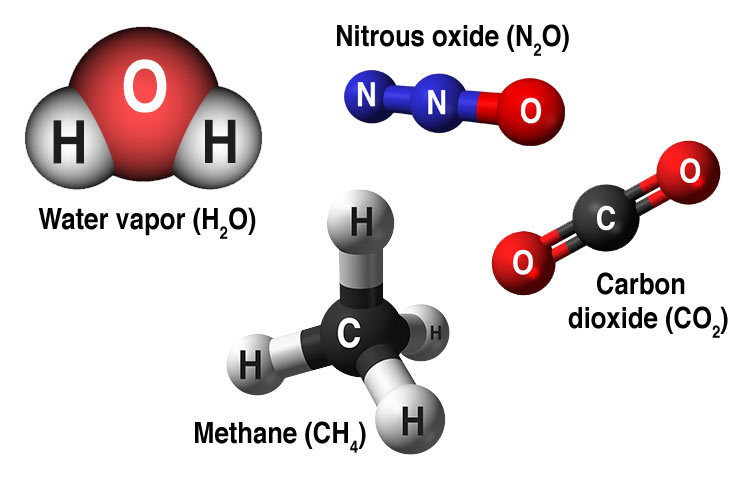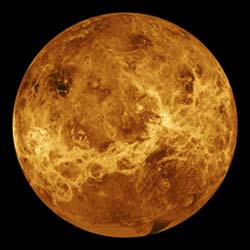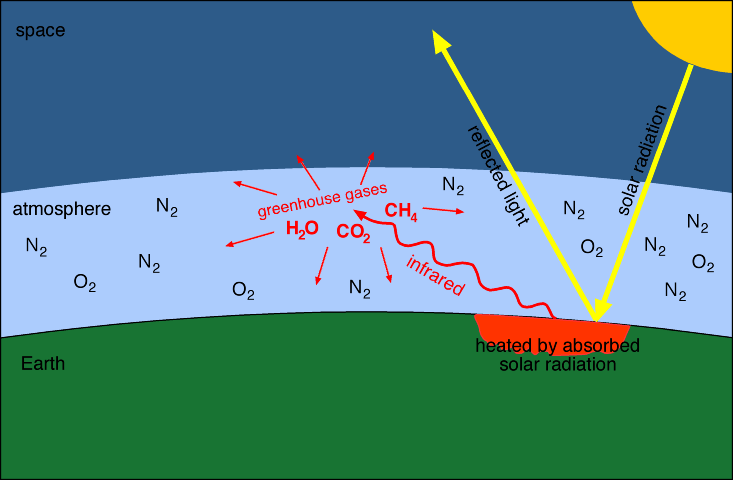“Acid Rain,” or more precisely acid precipitation, is the word used to describe rainfall that has a pH level of less than 5.6. This form of air pollution is currently a subject of great controversy because of it’s worldwide environmental damages. Acid rain is formed when oxides of nitrogen and sulfite combine with moisture in the atmosphere to make nitric and sulfuric acids. These acids can be carried away far from its origin. This report contains the causes, effects, and solutions to acid rain.
The two primary sources of acid rain are sulfur dioxide (SO2), and oxides of nitrogen (NOx). Sulfur dioxide is a colourless, prudent gas released as a by-product of combusted fossil fuels containing sulfur. A variety of industrial processes, such as the production of iron and steel, utility factories, and crude oil processing produce this gas. In iron and steel production, the smelting of metal sulfate ore, produces pure metal. This causes the release of sulfur dioxide. Metals such as zinc, nickel, and copper are commonly obtained by this process. Sulfur dioxide can also be emitted into the atmosphere by natural disasters or means. This ten percent of all sulfur dioxide emission comes from volcanoes, sea spray, plankton, and rotting vegetation. Overall, 69.4 percent of sulfur dioxide is produced by industrial combustion. Only 3.7 percent is caused by transportation
The other chemical that is also chiefly responsible for the make-up of acid rain is nitrogen oxide. Oxides of nitrogen is a term used to describe any compound of nitrogen with any amount of oxygen atoms. Nitrogen monoxide and nitrogen dioxide are all oxides of nitrogen. These gases are by-products of firing processes of extreme high temperatures (automobiles, utility plants), and in chemical industries (fertilizer production). Natural processes such as bacterial action in soil, forest fires, volcanic action, and lightning make up five percent of nitrogen oxide emission. Transportation makes up 43 percent, and 32 percent belongs to industrial combustion. [“Acid Rain.” The New World Book Encyclopedia. 1993.]
Nitrogen oxide is a dangerous gas by itself. This gas attacks the membranes of the respiratory organs and increases the likelihood of respiratory illness. It also contributes to ozone damage, and forms smog. Nitrogen oxide can spread far from the location it was originated by acid rain.
As mentioned before, any precipitation with a pH level less than 5.6 is considered to be acid rainfall. The difference between regular precipitation and acid precipitation is the pH level. pH is a symbol indicating how acidic or basic a solution is in ratios of relative concentration of hydrogen ions in a solution. A pH scale is used to determine if a specific solution is acidic or basic. Any number below seven is considered to be acidic. Any number above seven is considered to be basic. The scale is color coordinated with the pH level. Most pH scales use a range from zero to fourteen. Seven is the neutral point (pure water). A pH from 6.5 to 8, is considered the safe zone. Between these numbers, organisms are in very little or no harm.
Not only does the acidity of acid precipitation depend on emission levels, but also on the chemical mixtures in which sulfur dioxide and nitrogen oxides interact in the atmosphere. Sulfur dioxide and nitrogen oxides go through several complex steps of chemical reactions before they become the acids found in acid rain. The steps are broken down into two phases, gas phase and aqueous phase. There are various potential reactions that can contribute to the oxidation of sulfur dioxide in the atmosphere each having varying degrees of success. One possibility is photooxidation of sulfuric dioxide by means of ultraviolet light. This process uses light form the of electromagnetic spectrum. This causes the loss of by two oxygen atoms. This reaction was found to be an insignificant contributor to the formation of sulfuric acid. A second and more common process is when sulfur dioxide reacts with moisture found in the atmosphere. When this happens, sulfate dioxide immediately oxidizes to form a sulfite ion.
SO2 (g)+O2(g) -> SO3(g)
Afterwards, it becomes sulfuric acid when it joins with hydrogen atoms in the air.
SO3(g)+H2O(l) -> H2SO4(aq)
This reaction occurs quickly, therefore the formation of sulfur dioxide in the atmosphere is assumed to lead this type of oxidation to become sulfuric acid. Reaction example 1 (photooxidation), is slow due to the absence of a catalyst, proving why it is not a significant contributor.
Another common reaction for sulfur dioxide to becomes sulfuric acid is by oxidation by ozone. This reaction occurs at a preferable rate and is sometimes the main contributor to the oxidation of sulfuric acid. This, hydroxy radical is produced by the photodecomposition of the ozone and is very highly reactive with any species (type of chemical compounds). It does not require a catalyst and it is approximately 108-109 times more abundant in the atmosphere than molecular oxygen. Other insignificant reactions include oxidation by product of alkene-zone reactions, oxidation by reaction of NxOy species, oxidation by reactive oxygen transients, and oxidation by peroxy radicals. These reactions unfortunately prove to be insignificant for various reasons. All the reactions mentioned so far, are gas phase reactions. In the aqueous phase, sulfur dioxide exists as three species:
[S(IV)] -> [SO2(aq)] + [HSO32-] + [SO32-]
This dissociation occurs in a two part process:
SO2(aq) -> H+ + HSO3 –
HSO3- (aq) -> H+ + SO32-
The oxidation process of aqueous sulfur dioxide by molecular oxygen relies on metal catalyst such as iron and manganese. This reaction is unlike other oxidation process, which occurs by hydrogen peroxide. It requires an additional formation of an intermediate (A-), for example peroxymonosulfurous acid ion. This formation is shown below.
HSO3 H2O2 -> A- +H2O
A- +H -> H2SO4
Sulfur dioxide oxidation is most common in clouds and especially in heavily polluted air where compounds such as ammonia and ozone are in abundance. These catalysts help convert more sulfur dioxide into sulfuric acid. But not all of the sulfur dioxide is converted to sulfuric acid. In fact, a substantial amount can float up into the atmosphere, transport to another area and return to earth unconverted.
Like sulfur dioxide, nitrogen oxides rise into the atmosphere and are oxidized in clouds to form nitric or nitrous acid. These reactions are catalyzed in heavily polluted clouds where traces of iron, manganese, ammonia, and hydrogen peroxide are present. Nitrogen oxides rise into the atmosphere mainly from automobile exhaust. In the atmosphere it reacts with water to form nitric or nitrous acid.
NO2(g) + H2O(l) -> HNO3(aq)+HNO2(aq) [gas phase]
In the aqueous phase there are three equilibria to keep in mind for the oxidation of nitrogen oxide.
1.) 2NO2(g) + H2O(l) -> 2H+ + NO3 – + NO2 –
2.) NO(g) + NO2(g) + H2O(l) -> 2H+ + 2NO2 –
3.) 3NO2(g) + H2O(l) -> 2H+ + 2NO3 – + NO(g)
These reactions are limited by the partial pressures of nitrogen oxides present in the atmosphere, and the low solubility of nitrogen oxides, increase in reaction rate occurs only with the use of a metal catalyst, similar to those used in the aqueous oxidation of sulfur dioxide.
Over the years, scientists have noticed that some forests have been growing more and more slowly without reason. Trees do not grow as fast as they did before. Leaves and pines needles turn brown and fall off when they are supposed to be green.
Eventually, after several years of collecting and recording information on the chemistry and biology of the forest, researchers have concluded that this was the work of acid rain. A rainstorm occurs in a forest. The summer spring washes the leaves of the branches and fall to the forest floor below. Some of the water is absorbed into the soil. Water run-off enters nearby streams, rivers, or lakes. That soil may have neutralized some or all of the acidity of the acid rainwater. This ability of neutralization is call buffering capacity. Without buffering capacity, soil pH would change rapidly. Midwestern states like Nebraska and Indiana have soil that is well buffered. Nonetheless, mountainous northwest areas such as the Adirondack mountains are less able to buffer acid. High pH levels in the soil help accelerate soil weathering and remove nutrients. It also makes some toxic elements, for example aluminum, more soluble. High aluminum concentrations in soil can prevent the use of nutrients by plants. Acid rain does not kill trees immediately or directly. Instead, it is more likely to weaken the tree by destroying its leaves, thus limiting the nutrients available to it. Or, acid rain can seep into the ground, poisoning the trees with toxic substances that are slowly being absorbed through the roots. When acid rain falls, the acidic rainwater dissolves the nutrients and helpful minerals from the soil. These minerals are then washed away before trees and other plants can use them to grow. Not only does acid rain strip away the nutrients from the plants, they help release toxic substance such as aluminum into the soil. This occurs because these metals are bound to the soil under normal conditions, but the additional dissolving action of hydrogen ions causes rocks and small bound soil particles to break down. When acid rain is frequent, leaves tend to lose their protective waxy coating, When leaves lose their coating, the plant itself is open to any possible disease. By damaging the leaves, the plant can not produce enough food energy for it to remain healthy. Once the plant is weak, it can become more vulnerable to disease, insects, and cold weather which may ultimately kill it.
Acid rain does not only effect organisms on land, but also effect organisms in aquatic biomes. Most lakes and streams have a pH level between six and eight. Some lakes are naturally acidic even without the effects of acid rain. For example, Little Echo Pond in New York has a pH level of 4.2.
There are several routes through which acid rain can enter the lakes. Some chemical substances exist as dry particles in the atmosphere, while others enter directly into the lake in a form of precipitation. Acid rain that has fallen on land can be drained through sewage systems leading to lakes. Another way acids can enter the lake is by spring acid shock. When acid snow melts in the spring, the acids in the snow seeps into the ground. Some run-off the ground and into lakes.
Spring is a vulnerable time for many species since this is the time for reproduction. The sudden change in pH level is dangerous because the acid can cause serious deformities in their young. Generally, the young of most species are more sensitive than the elders. But not all species can tolerate the same amount of acid. For example, frogs may tolerate relatively high levels of acidity, while snails are more sensitive to pH changes.
Sulfuric acid in polluted precipitation interferes with the fish’s proficiency to take in oxygen, salt, and nutrients. For freshwater fish, maintaining osmoregulation (the ability to maintain a state of balance between salt and minerals in the organism’s tissue) is essential to stay alive. Acid molecules cause mucus to form in their gills preventing the fish to absorb oxygen well. Also, a low pH level will throw off the balance of salt in the fish’s tissue. Calcium levels of some fish cannot be maintained due to the changes in pH level. This causes a problem in reproduction: the eggs are too brittle or weak. Lacking calcium causes weak spines and deformities in bones. Sometimes when acid rainfall runs off the land, it carries fertilizers with it. Fertilizer helps stimulate the growth of algae because of the amount of nitrogen in it. However, because of the increase in the death of fish the decomposition takes up even more oxygen. This takes away from surviving fish. In other terms, acid rain does not help aquatic ecosystems in anyway.
Acid rain does not only damage the natural ecosystems, but also man-made materials and structures. Marble, limestone, and sandstone can easily be dissolved by acid rain. Metals, paints, textiles, and ceramic can effortlessly be corroded. Acid rain can downgrade leather and rubber. Man-made materials slowly deteriorate even when exposed to unpolluted rain, but acid rain helps speed up the process. Acid rain causes carvings and monuments in stones to lose their features.
In limestone, acidic water reacts with calcium to form calcium sulfate.
CaCO3 + H2SO4 -> CaSO4 + H2CO3
For iron, the acidic water produces an additional proton giving iron a positive charge.
4Fe(s) + 2O2(g) + 8 (aq) -> 4Fe2+ (aq) + 4H2O(l)
When iron reacts with more oxygen it forms iron oxide (rust).
4Fe2+ + (aq) + O2(g) + 4H2O(l) -> 2Fe2O3(s) + 8H+ + (aq)
Most importantly, acid rain can affect health of a human being. It can harm us through the atmosphere or through the soil from which our food is grown and eaten from. Acid rain causes toxic metals to break loose from their natural chemical compounds. Toxic metals themselves are dangerous, but if they are combined with other elements, they are harmless. They release toxic metals that might be absorbed by the drinking water, crops, or animals that human consume. These foods that are consumed could cause nerve damage to children or severe brain damage or death. Scientists believe that one metal, aluminum, is suspected to relate to Alzheimer’s disease.
One of the serious side effects of acid rain on human is respiratory problems. The sulfur dioxide and nitrogen oxide emission gives risk to respiratory problems such as dry coughs, asthma, headaches, eye, nose, and throat irritation. Polluted rainfall is especially harmful to those who suffer from asthma or those who have a hard time breathing. But even healthy people can have their lungs damaged by acid air pollutants. Acid rain can aggravate a person’s ability to breathe and may increase disease which could lead to death.
In 1991, the United States and Canada signed an air quality agreement. Ever since that time, both countries have taken actions to reduce sulfur dioxide emission. The United States agree to reduce their annual sulfur dioxide emission by about ten million tons by the year 2000. A year before the agreement, the Clean Air Pact Amendment tried to reduce nitrogen oxide by two million tons. This program focused on the source that emits nitrogen oxide, automobiles and coal-fired electric utility boilers.
Reducing nitrogen oxide emission in a utility plant starts during the combustion phase. A procedure called Overfire Air is used to redirect a fraction of the total air in the combustion chamber. This requires the combustion process, which is redirected to an upper furnace. This causes the combustion to occur with less O2 than required, thus slowing down the transformation of atmospheric nitrogen to nitrogen oxide. After combustion, a system of catalytic reductions are put into effect. This system embraces the injection of ammonia gas upstream of the catalytic reaction chamber. The gas will react with nitrogen oxide by this reaction.
4NO + 4NH3 + O2 -> 4N2+6H2O
Then it will react with NO2 by the following reaction.
2NO2 + 4NH3 + O2 -> 3N2 + 6H2O
The safe nitrogen can be released into the atmosphere.
Since most nitrogen oxide emissions are from cars, catalytic converters must be install on cars to reduce this emission. The catalytic converter is mounted on the exhaust pipe, forcing all the exhaust to pass though it. This converter looks like a dense honeycomb, but it is coated with either platimun, palladium, or rhodium. This converts nitrogen oxides, carbon dioxides and unburned hydrocarbons into a cleaner state.
To reduce sulfur dioxide emission utility plants are required to do several steps by the Clean Air Act Amendment. Before combustion, these utilities plants have to go through a process call coal cleaning. This process is performed gravitationally. Meaning, it is successful in removing pyritic sulfur due to its high specific gravity, but it is unsuccessful in removing chemically bound organic sulfur. This cleaning process is only limited by the percent of pyritic sulfur in the coal. Coal with high amount of pyritic sulfur is coal in higher demands. Another way to reduce sulfur dioxide before combustion is by burning coal with low sulfur content. Low sulfur content coals are called subituminous coal. This process in reducing sulfur dioxide is very expensive due to the high demand of subituminous coal.
During combustion, a process called Fluidized Bed Combustion (FBC), is used to reduce sulfur dioxide emissions into the atmosphere. This process contains limestone or a sandstone bed that are crushed and diluted into the fuel. It is important that a balance is established between the heat liberated within the bed from fuel combustion, and the heat removed by the flue gas as it leaves. Flue gas is the mixture of gases resulting from combustion and other reactions in a chamber. This enables the limestones to react with sulfur dioxide and reduce emission by 90 percent. After combustion, a process known as wet flue gas desulfurization is taken into action. This process requires a web scrubber at the downward end of the boiler. This process is very similar to FBC. This scrubber can be made of either limestone or sodium hydroxide. Limestone is more commonly used. As sulfur dioxide enters this area it reacts with the limestone in the following example:
CaCO3 + SO2 + H2O + O2 -> CaSO3 + CaSO4 + CO2 + H2O
After being scrubbed, which is the term used for the phase after coal has past the wet scrubber, the flue gas is re-emmited and the waste solids are disposed.
Acid rain is an issue that can not be over looked. This phenomenon destroys anything it touches or interacts with it. When acid rain damages the forest or the environment it affects humans in the long run. Once forests are totally destroyed and lakes are totally polluted animals begin to decrease because of lack of food and shelter. If all the animals, which are our food source, die out, humans too would die out. Acid rain can also destroy our homes and monuments that humans hold dearly.
What humans can do, as citizens, to reduce sulfur and nitrogen dioxide emission is to reduce the use of fossil fuels. Car pools, public transportation, or walking can reduce tons of nitrogen oxide emissions. Using less energy benefits the environment because the energy used comes from fossil fuels which can lead to acid rain. For example, turning off lights not being used, and reduce air conditioning and heat usage. Replacing old appliances and electronics with newer energy efficient products is also an excellent idea. Sulfur dioxide emission can be reduced by adding scrubbers to utility plants. An alternative power source can also be used in power plants to reduce emissions. These alternatives are: geothermal energy, solar power energy, wind energy, and water energy.
In conclusion, the two primary sources of acid rain is sulfur dioxide and nitrogen oxide. Automobiles are the main source of nitrogen oxide emissions, and utility factories are the main source for sulfur dioxide emissions. These gases evaporate into the atmosphere and then oxidized in clouds to form nitric or nitrous acid and sulfuric acid. When these acids fall back to the earth they do not cause damage to just the environment but also to human health. Acid rain kills plant life and destroys life in lakes and ponds. The pollutants in acid rain causes problem in human respiratory systems. The pollutants attack humans indirectly through the foods they consumed. They effected human health directly when humans inhale the pollutants. Governments have passed laws to reduce emissions of sulfur dioxide and nitrogen oxide, but it is no use unless people start to work together in stopping the release of these pollutants. If the acid rain destroys our environment, eventually it will destroy us as well.

/Module-3/3b/2.gif)
/Module-3/3b/8.gif)
/Module-3/3b/9.gif)
/Module-3/3b/12.gif)
/Module-3/3b/13.gif)
/Module-3/3b/14.gif)
/Module-3/3b/4.gif)
/Module-3/3b/5.gif)
/Module-3/3b/10.gif)
/Module-3/3b/11.gif)
/Module-3/3b/6.gif)
/Module-3/3b/7.gif)














